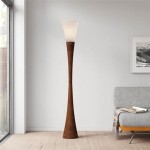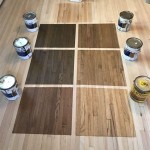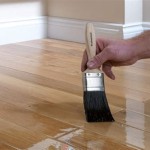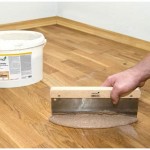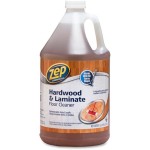Engineered or Solid Wood Flooring: Making the Right Choice
Choosing between engineered and solid wood flooring can be a daunting task. Both offer the aesthetic appeal of natural wood, but they differ significantly in their construction, performance characteristics, and suitability for various environments. Understanding these differences is crucial for making an informed decision that aligns with individual needs and preferences.
Construction and Composition
Solid wood flooring, as the name suggests, is milled from a single piece of hardwood timber. This construction gives it inherent strength and stability, allowing it to be sanded and refinished multiple times over its lifespan. The thickness of solid wood planks typically ranges from 3/4 inch to 5/8 inch.
Engineered wood flooring, on the other hand, is constructed from multiple layers of wood veneers bonded together with adhesives. The top layer, known as the wear layer, is made of the desired hardwood species, providing the visible wood grain and texture. The underlying layers are typically composed of less expensive wood species, such as plywood or high-density fiberboard (HDF), arranged in a cross-grained pattern for enhanced dimensional stability. The thickness of the wear layer determines how many times the floor can be refinished.
Installation Methods and Suitability
Solid wood flooring is typically installed using nails or staples, directly fastened to a wood subfloor. Due to its susceptibility to moisture fluctuations, solid wood is generally not recommended for installation below grade or in areas prone to high humidity, such as bathrooms or basements. Proper acclimation of the wood to the environment before installation is critical to minimize expansion and contraction issues.
Engineered wood flooring offers greater flexibility in installation methods. Depending on the specific product and subfloor type, it can be nailed, stapled, glued, or even floated over an underlayment. Its layered construction makes it more dimensionally stable than solid wood, allowing for installation in environments with moderate moisture levels, including some basements and kitchens. However, standing water can still damage engineered wood flooring.
Cost and Maintenance
Solid wood flooring generally carries a higher initial cost compared to engineered wood, due to the use of a single piece of hardwood timber. However, its ability to be refinished multiple times can potentially extend its lifespan and offer long-term value. Regular sweeping and occasional damp mopping are sufficient for routine maintenance. When the surface shows signs of wear, it can be sanded down and refinished to restore its original appearance.
Engineered wood flooring often presents a more budget-friendly option upfront. While some engineered wood floors can be refinished, the number of times is limited by the thickness of the wear layer. Some engineered wood floors with thinner wear layers may not be suitable for refinishing at all. Regular cleaning with a soft broom or vacuum and a slightly damp mop is recommended. Avoid using excessive water or harsh cleaning chemicals, as these can damage the finish and underlying layers.
Durability and Lifespan
Solid wood flooring, with proper care and maintenance, can last for generations. Its solid construction makes it highly resistant to dents and scratches, and its refinishability allows it to withstand the test of time. Factors affecting the lifespan of solid wood flooring include the species of wood, the quality of installation, and the level of foot traffic.
The lifespan of engineered wood flooring varies depending on the thickness of the wear layer. Thicker wear layers allow for more refinishing and, therefore, a longer lifespan. While engineered wood is generally more resistant to moisture damage than solid wood, it may be more susceptible to dents and scratches, particularly in high-traffic areas.
Environmental Considerations
Both solid wood and engineered wood flooring can be considered sustainable flooring options when sourced from responsibly managed forests. Look for certifications such as the Forest Stewardship Council (FSC) certification, which ensures that the wood comes from forests managed according to strict environmental and social standards.
Engineered wood flooring can potentially offer greater resource efficiency compared to solid wood. Its layered construction allows manufacturers to utilize less high-value hardwood, incorporating fast-growing or readily available wood species in the core layers.

Engineered Wood Vs Solid Which Is Better Woodpecker Flooring

Solid Hardwood Vs Engineered Flooring Carpet One Floor Home

Engineered Wood Vs Solid Hardwood

Engineered Vs Solid Wood Flooring The Good Guys

Engineered Wood Flooring Vs Solid Hardwood

Hardwood Vs Engineered Wood Flooring Which Is Best For You Forbes Home

Solid Vs Engineered Hardwood Which Is Better

The Ultimate Guide To Engineered Hardwood Flooring Precision

Should I Choose Engineered Or Solid Hardwood Flooring Ambience

Solid Vs Engineered Hardwood Flooring Olde Wood Ltd
